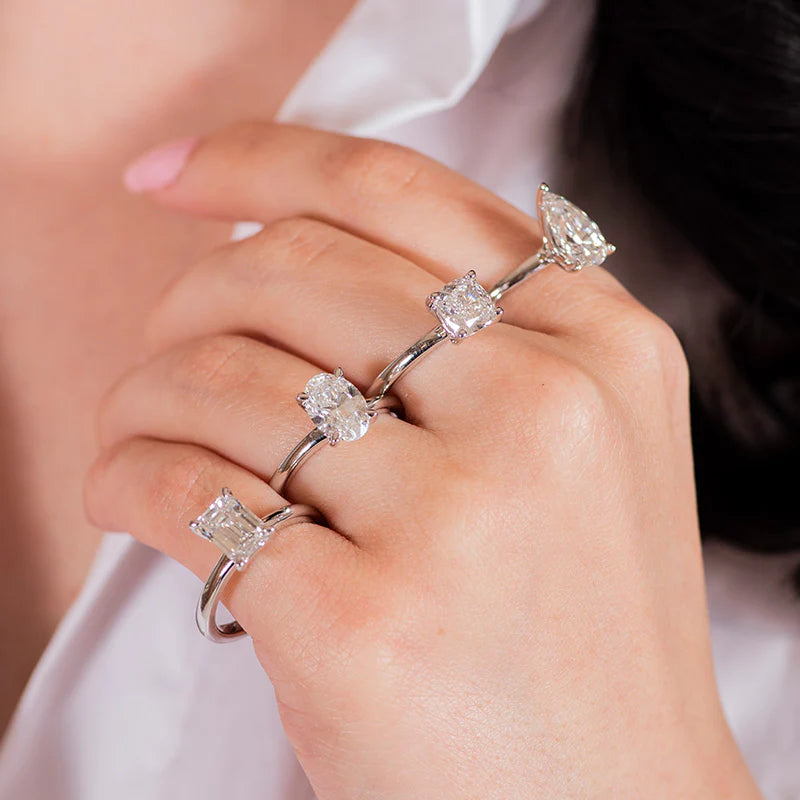Engagement Rings Fundamentals Explained
Engagement Rings Fundamentals Explained
Blog Article
The Basic Principles Of Engagement Rings
Table of ContentsHow Engagement Rings can Save You Time, Stress, and Money.Not known Facts About Engagement RingsSome Known Details About Engagement Rings The smart Trick of Engagement Rings That Nobody is Talking AboutThe Main Principles Of Engagement Rings The Only Guide for Engagement Rings
Tension-style settings additionally provide far better protection for the gems. Many tension-style settings are produced round dazzling diamonds or other round gems, yet they can be changed to fit several various other forms. The setting can also be modified to have accent treasures around the centre rock or to permit a side rock on each side of the centre stone.Is not breakable and wears well. Can be personalized. Produces an optical impression of the centre gems awaiting the air. Have a modern style that contains elegance and style - engagement rings. Easy to cleanse and keep. If it has prongs, they can come to be loosened with wear. This is conveniently corrected by having the ring routinely cleaned and examined by a jeweller.
The Main Principles Of Engagement Rings
The first ring with a real tension setting was made in Vreden, Germany in the 1970s. Ursula Exner and popular sculptor Walter Wittek functioned with each other to style and make this initial ring. In the following years, other jewellers created their very own stress settings, in addition to the extra protected and functional tension-style settings.

This provides the ring an easy, yet trendy elegance that works well for both males and females's wedding event rings, along with engagement rings. The flush setting is occasionally also called a gypsy setup. We can not say for sure just how it came to have that name, but possibly it is since the setup stands for a free spirit.
Not known Factual Statements About Engagement Rings
Flush settings work well for round, square or rectangle-shaped gems, however they can be difficult to adapt to certain elegant cuts, for example, a heart-shaped ruby. Maintains the gemstones safe and secure.
Frequently impractical for heart-shaped treasures and a few various other gems with fancy cuts. Rings with flush or gypsy settings have actually been around because the late 1800s.
Solitaire engagement rings have only one centre gemstone on an ordinary band. Many other engagement rings, though, additionally have accent gems.
The Only Guide for Engagement Rings
There are 4 setups that are extensively used to hold accent gems. The castle setup gained its name because from the side it appears like the battlements in addition to a castle wall. This setup is additionally regularly called the scallop setup. Castle setups are made straight on the shank of the ring.
The prongs in a castle setting can be right up and down with basic rounded ideas or they can be cut at an angle so that they resemble fishtails. Castle setups are extremely versatile.
Top Guidelines Of Engagement Rings
The metal sides of the castle setup are always reduce low, usually in a scallop pattern. This enables much more light to get to the accent gems and boosts their radiance. If it is well made, the reduced look these up scalloped side of the castle setting can likewise create a visual fallacy. It enables the sides of the gems to be easily seen and produces the impression that the gems are being kept in an unseen setting.
Rises light refraction and brilliance. Catches attention with its shimmers. Creates the impression of an unseen setup. Has a sophisticated elegance. Easy to tidy and needs little upkeep. The tiny prongs can come to be loose. We recommend that rings with the castle setting be cleaned periodically by a jeweler, so that the prongs can be checked.
The prongs on a castle setup can catch on garments, however this is unusual since the prongs are smooth. The castle setting can be made use of to make gorgeous eternity rings. The first eternity rings were made in the 1960s. Those initial rings, like eternity rings today, have a row of closely set gems entirely enclosing their shank.

Not known Facts About Engagement Rings
The grain setup is a really secure setup. The sides of the channel protect the accent treasures from bumps and scratches and the handmade prongs seldom end up being loose. see it here One drawback of the bead setup is that the gemstones obtain much less light due to the fact that they are put down in the network. This results in the treasures generating somewhat less luster and sparkle.
Every treasure in the grain setup is bordered by 4 glossy grains that are level with the top of the shank. These beads catch the light and emit their own sparkles in every direction. The beads' shimmers together with the radiance and sparkles produced by the accent treasures bring the grain readying to life and offer it constant shimmers.
They can use it to make eternity rings, along with to enhance the simple shank or even more complex split shank that some interaction rings have. In the basic grain setup, the accent gems are set in one straight line. Occasionally, however, jewelers will raise the glimmer on an involvement ring by adding two find or even more parallel lines of grain collection gems.
Report this page